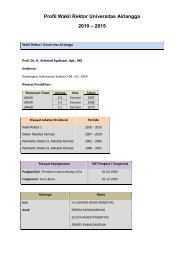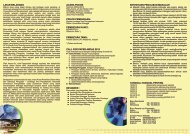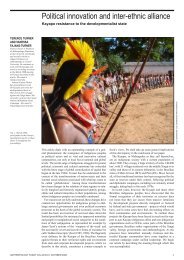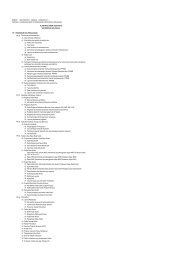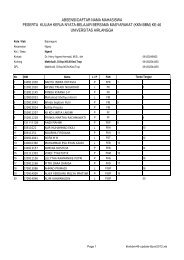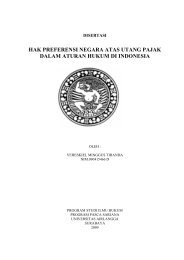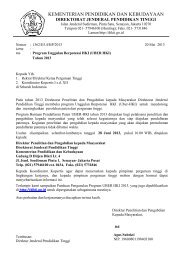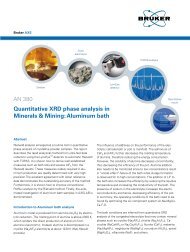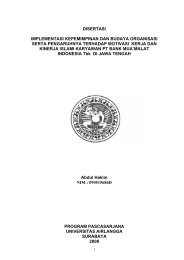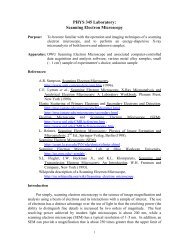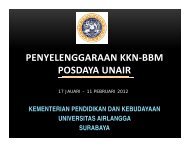Medicinal properties of mangosteen (Garcinia mangostana)
Medicinal properties of mangosteen (Garcinia mangostana)
Medicinal properties of mangosteen (Garcinia mangostana)
You also want an ePaper? Increase the reach of your titles
YUMPU automatically turns print PDFs into web optimized ePapers that Google loves.
3228 J. Pedraza-Chaverri et al. / Food and Chemical Toxicology 46 (2008) 3227–3239<br />
1. Introduction<br />
Mangosteen (<strong>Garcinia</strong> <strong>mangostana</strong> Linn.) (GML) is a tropical tree<br />
from India, Myanmar, Malaysia, Philippines, Sri Lanka, and Thailand.<br />
This tree can reach 6–25 m and it has leathery, glabrous<br />
leaves and is slow to grow (Morton, 1987).<br />
The <strong>mangosteen</strong>-fruit is dark purple or reddish, with white, s<strong>of</strong>t<br />
and juicy edible pulp with a slightly acid and sweet flavor and a<br />
pleasant aroma (Jung et al., 2006). Mangosteen is known as ‘‘the<br />
queen <strong>of</strong> fruits” because it is one <strong>of</strong> the best tasting tropical fruits.<br />
The pericarp <strong>of</strong> <strong>mangosteen</strong>-fruit has been used as a medicinal<br />
agent by Southeast Asians for centuries in the treatment <strong>of</strong> skin<br />
infections and wounds (Mahabusarakam et al., 1987; Pierce,<br />
2003), amoebic dysentery (Garnett and Sturton, 1932; Chopra<br />
et al., 1956), etc. (see Table 1). In Ayurvedic medicine the pericarp<br />
<strong>of</strong> <strong>mangosteen</strong>-fruit has wide use against inflammation and diarrhea<br />
(Balasubramanian and Rajagopalan, 1988), and cholera and<br />
dysentery (Sen et al., 1980b).<br />
GML has been shown to contain a variety <strong>of</strong> secondary metabolites<br />
such as prenylated and oxygenated xanthones (Govindachari<br />
and Muthukumaraswamy, 1971; Sultanbawa, 1980; Peres et al.,<br />
2000).<br />
Xanthones or xanthen-9H-ones are secondary metabolites<br />
found in some higher plant families, fungi and lichens (Peres<br />
et al., 2000; Vieira and Kijjoa, 2005), and they comprise an important<br />
class <strong>of</strong> oxygenated heterocycles. The xanthone nucleus is<br />
known as 9-xanthenone or dibenzo-c-pyrone and it is symmetric<br />
(Fig. 1) (Vieira and Kijjoa, 2005; Pinto et al., 2005; Souza and Pinto,<br />
2005; Gales and Damas, 2005). Xanthones have been classified in<br />
five groups: (a) simple oxygenated xanthones, (b) xanthone glycosides,<br />
(c) prenylated xanthones, (d) xanthonolignoids and (e) miscellaneous<br />
xanthones (Sultanbawa, 1980; Jiang et al., 2004).<br />
From 20 higher plant families (122 species in 44 genus), 19 fungi<br />
species and 3 lichens species, 278 new xanthones were identified<br />
between 2000 and 2004 (Vieira and Kijjoa, 2005). Currently,<br />
approximately 1000 different xanthones have been described (Souza<br />
and Pinto, 2005). The biological activities <strong>of</strong> this class <strong>of</strong> com-<br />
Table 1<br />
Traditional medicinal <strong>properties</strong> <strong>of</strong> <strong>Garcinia</strong> <strong>mangostana</strong><br />
Illness References<br />
pounds are associated with their tricyclic scaffold but vary<br />
depending on the nature and/or position <strong>of</strong> the different substituents<br />
(Souza and Pinto, 2005; Jiang et al., 2004; Bennett and Lee,<br />
1989; Mandal et al., 1992; Peres and Nagem, 1996).<br />
Xanthones have been isolated from pericarp, whole fruit, bark,<br />
and leaves <strong>of</strong> GML. Several studies have shown that xanthones obtained<br />
from <strong>mangosteen</strong>-fruit have remarkable biological activities<br />
(Suksamrarn et al., 2006). a-, b- and c-mangostins, garcinone E, 8deoxygartanin<br />
and gartanin are the most studied xanthones. In<br />
addition, synthetic xanthones have been used in several studies.<br />
Antioxidant, antitumoral, anti-inflammatory, antiallergy, antibacterial,<br />
antifungal and antiviral are some <strong>of</strong> the reported activities<br />
<strong>of</strong> xanthones isolated from GML which are discussed in the present<br />
review.<br />
2. Xanthones isolated from the pericarp <strong>of</strong> <strong>mangosteen</strong>-fruit<br />
Fifty xanthones have been isolated from pericarp <strong>mangosteen</strong>fruit<br />
(Table 2). The first <strong>of</strong> them was named mangostin (after it<br />
was named a-mangostin) when it was isolated in 1855 (Fig. 1)<br />
(Schmid, 1855). It is a yellow coloring matter that can also be obtained<br />
from bark and dried sap <strong>of</strong> GML (Dragendorff, 1930).<br />
Later, Dragendorff (1930) and Murakami (1932) elucidated the<br />
mangostin structure. Yates and Stout (1958) established the<br />
molecular formula, and type and position <strong>of</strong> substituents <strong>of</strong> amangostin.<br />
Furthermore, Dragendorff (1930) isolated b-mangostin,<br />
the structure <strong>of</strong> which was not elucidated until 1968 (Yates and<br />
Bhat, 1968). Jefferson (1970) and Govindachari and Muthukumaraswamy<br />
(1971) also isolated a- and b-mangostins.<br />
Recently, mangosharin was isolated from the bark <strong>of</strong> GML (Ee<br />
et al., 2006) and a- and b-mangostins were isolated from the root<br />
<strong>of</strong> Cratoxylum cochinchinense, which is a shrub tree belonging to the<br />
Guttiferae family (Laphookhieo et al., 2006).<br />
Other xanthones that have been isolated from the pericarp <strong>of</strong><br />
<strong>mangosteen</strong>-fruit are c-mangostin (Jefferson et al., 1970),<br />
gartanin and 8-deoxygartanin (Govindachari and Muthukumaraswamy,<br />
1971), 5,9-dihydroxy-8-methoxy-2,2-dimethyl-7-isopre-<br />
Dysentery Garnett and Sturton (1932), Chopra et al. (1956), Morton (1987) and Yates and Stout (1958)<br />
Diarrhea and chronic diarrhea in adults and children Garnett and Sturton (1932), Chopra et al. (1956), Morton (1987) and Wan et al. (1973)<br />
Haemorrhoids Pierce (2003)<br />
Food allergies Pierce (2003)<br />
Arthritis a<br />
Pierce (2003)<br />
Wounds a<br />
Mahabusarakam et al. (1986, 1987), Wan (1973) and Pierce (2003)<br />
Skin infections Mahabusarakam et al. (1987), Pierce (2003) and Jinsart et al. (1992)<br />
Tuberculosis Harbone et al. (1999) and Suksamrarn et al. (2006)<br />
Inflammation Saralamp et al. (1996), Chairungsrilerd et al. (1996a,b) and Harbone et al. (1999)<br />
Ulcers Harbone et al. (1999) and Hasegawa et al. (1996)<br />
Micosis Saralamp et al. (1996) and Harbone et al. (1999)<br />
Affections <strong>of</strong> the genito-urinary tracts Caius (2003)<br />
Gonorrhea, cystitis and urethra suppuration Garnett and Sturton (1932), Morton (1987) and Moongkarndi et al. (2004a)<br />
Mouth aphthae Caius (2003)<br />
Fever Caius (2003), Morton (1987) and Yates and Stout (1958)<br />
Amoebic dysentery Caius (2003) and Morton (1987)<br />
Eczema b<br />
Morton (1987)<br />
Acne c<br />
Saralamp et al. (1996) and Chomnawang et al. (2005)<br />
Thrush Morton (1987)<br />
Abdominal pain Moongkarndi et al. (2004a)<br />
Suppuration Moongkarndi et al. (2004a)<br />
Leucorrhoea Moongkarndi et al. (2004a)<br />
Cholera Sen et al. (1980a)<br />
Convulsants Malawska (2005)<br />
a Pericarp poultice.<br />
b Local use as ointment.<br />
c Cosmetic cream.



